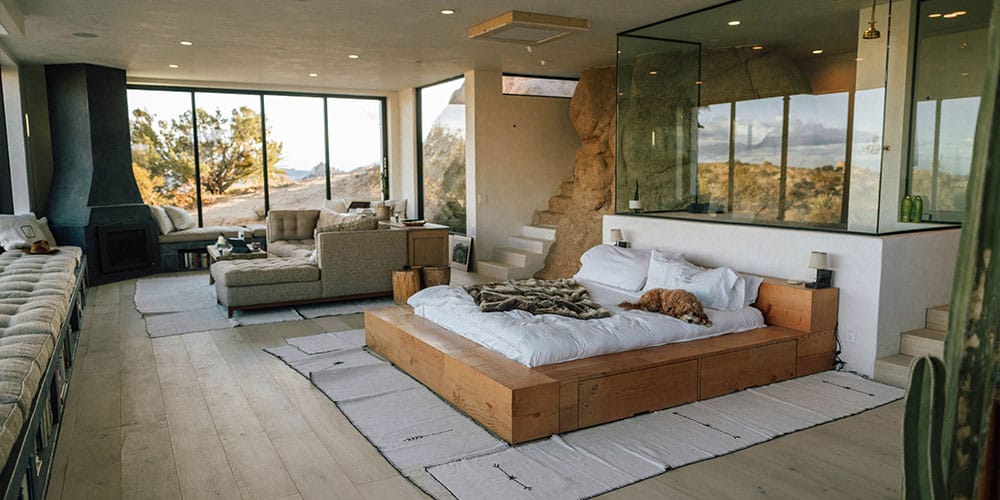
Interior Design Elements and Principles
Table of Contents
Interior design elements
A room or a whole house can look like a professional design if you choose the right objects and know how to arrange them. There are people who have the ability to combine the elements that are available to them. But, studying the basics of design will make the project have a better result. BVA in Interior and Spatial Design is one of the best interior programs that one can enroll for studying design.
When you prepare for a renovation, you have an idea of what you want, the style you prefer and how you would like the final decoration to look. You would have searched magazines, the Internet, and furniture stores to find designs that fit what you want.
Now you need to focus on bringing those ideas to life. Interior design elements are the tools you have at your disposal, to decorate a room. That is, the lines, shapes, textures, colors and space. Combining them well you will get a “magazine” room.
Let’s see what each of these elements is about before learning how to implement them.
Lines
In interior design, lines are what define the space. It is the way in which the objects are placed and the route we make with our eyes on them.
Lines are a versatile element, capable of transmitting sensations such as order, elegance, movement, sobriety, poise, agitation, etc. We will find them on the floor, ceiling, walls, doors, windows, arches, columns, fabrics, and much more. Interior designing courses in bangalore teach an aspirant the different considerations about lines.
Some considerations to take into account for lines are the following:
● The fine lines convey insecurity and the thick ones poise.
● Verticals make space look taller. They are related to spirituality and greatness.
● The horizontals expand the space widthwise and make it appear lower. Provides a greater sense of intimacy, calm, relaxation.
● Zigzag lines give a feeling of excitement and agitation.
● The wavy lines convey movement, fluidity, freedom. They represent the natural.
● Diagonals suggest energy, action, movement.
Color
Color is one of the most important elements in design. In addition, it is among the first choices made when you decide to reform homes. The design of a room can revolve around a specific color or palette.
Colors have an important emotional influence. You have to know how to choose the right one depending on the room to be decorated. For example, in the bedroom, you have to promote rest. For this, you can use blue, yellow, or green in its lighter shades. In the dining room, you can use tones that favor the appetite, such as citrus. Design schools in bangalore organize classes that can give students an overview of color theory.
They also influence the perception of space. Light colors give the feeling of larger rooms, while dark colors reduce it.
Shapes
The forms are marked by the silhouette of the objects and also by the architecture of the spaces. Like the previous elements, those that apply to design will influence the perception.
The circle, triangle, and square are the basic shapes of interior design. This is due to the structural capacity that they have and also because various partitions, overlaps, displacements, and combinations can be made using them. Interior design colleges in Bangalore provide quality education to students so they understand the fundamentals of design.
The triangle allows many variations, they convey effectiveness and aggressiveness. The square, on the other hand, allows generating more shapes from it; suggests stability, harmony, and strength. Finally, the circle indicates unity, concentration, attracts the gaze towards the center of the figure.
Textures
The texture is perceived through touch. A more interesting design can be created by combining different types of textures. That is, it will not always be necessary to choose a different one for a piece of the design, but these can be varied.
Another way to use it would be, using a single texture and varying the colors that are used. Using different textures it is possible to add depth to the design and play with the dimensions.
Space
Space is the distance that exists between one object and another within the decoration. You must use it to generate balance and harmony in interior design. In other words, if you have a large object, such as a large painting, leave free space around it. This separation will help the framed image to be better perceived.
INTERIOR DESIGN PRINCIPLES
For the realization of an interior design project, be it from scratch or a modification or remodeling of space, the designer has some theoretical tools that will help him in conceptualization and development of his ideas. These theoretical concepts can be present from color, texture to the arrangement of furniture and accessories, for the design of the floor, walls, etc.
These design principles are balance, rhythm, proportion, scale, harmony, and unity.
The Balance
Visual balance in a room is called balance. Gives a sense of rest and a feeling of completion. A balanced room gives consideration to the placement of objects based on their visual weight. Line elements, shape, color and texture help determine an object’s visual weight, which is how much space it appears to take up. Balance also refers to how and where elements (line, shape, color, and texture) are placed within a room. To maintain balance, you should try to distribute the elements throughout the room.
- The Formal balance, often called symmetrical balance, creates a mirror image effect.
- The casual balance uses different objects of the same visual weight to create balance in a room. It is more subtle and spontaneous and gives a more warm and casual feeling.
The Emphasis
It is the focal point of the room. The focal point should be obvious when one enters the room; it is the area to which the eye is drawn. Whatever is presented as the center of interest – a fireplace, a work of art or a window treatment hatching a beautiful view – must be emphasized enough so that everything else leads to the area presented. Emphasis can be added to a natural focal point or one can be created in a room through the effective use of lines, shapes, colors, and textures.
Rhythm
Rhythm provides the discipline that the eye controls as it moves around a room. Rhythm helps the eye to move easily from one object to another and creates a harmony that makes the eye distinguish a unified whole. Rhythm is created through the repetition of lines, shape, color, or texture. It can also be created through progression. The progressive rate is gradually increasing or decreasing in size, direction, or color.
Proportion and scale
The size relationships in a room are defined by proportion and scale. Proportion refers to how the elements within an object are related to the object as a whole. The scale is related to the size of an object when compared to the size of the space in which it is located.
The scale is understood as the relationship between the proportions of the visual elements of a composition. All elements have the ability to modify and define each other according to the relationships that are defined between their analogous properties. Therefore, the concept of scale does not refer only to the relationship between sizes of two or more elements, but also to the relationship between colors, shapes, etc.
An element is large or small depending on the size of the elements that accompany it on stage. The color of a shape is bright or off depending on the color of the background it is on. That is, the properties of a visual element are not absolute, but relative, since they depend on the rest of the elements that accompany it in the composition .
There are different types of scale :
Intimate: man has a very close, intimate relationship with space or structure in which he is. Eg an elevator.
Normal: the structure has a certain standard height where you can be and feel comfortable, it is a wide space, eg. Houses, classrooms, etc.
Monumental: it is the relationship of a man referring to a higher structure such as buildings, shopping centers, etc.
Harmony and unity
A well-designed room is a unified whole that encompasses all other design elements and principles. Unity ensures a sense of order. There is a consistency of sizes and shapes, a harmony of color and pattern. The ultimate goal of decoration is to create a room with unity, harmony and a sense of rhythm. This is accomplished by repeating the elements, balancing the entire length of the room, and then adding a bit of variety so that space has its own sense of personality. A career in Interior Design is bright for people who follow these basic rules of design. Too much unity can be boring, too much variety can cause a feeling of unease. Maneuvering the elements and principles to simply get the right mix is key to good design.
Along with these principles of interior design, a professional interior designer must take into account several aspects:
- Needs and activities of the people who will occupy the space.
- Circulation within the space.
- Storage capacity made easy.
- Knowledge of the structure of the building, premises, or where an event will take place.
Integration of facilities: heating, plumbing and sanitation, lighting and electricity, air conditioning, security, audiovisual, and communication systems.
Thus these are the elements and principles of interior designing. Animaster College of Animation and Design has always come up with topics that will educate a person and increase their knowledge. They have also come up with topics that are important and relevant in the industry.
If you are an aspirant looking for a bright career in Interior Design, then consider visiting www.animaster.com. Team Animaster is always ready to guide you.



